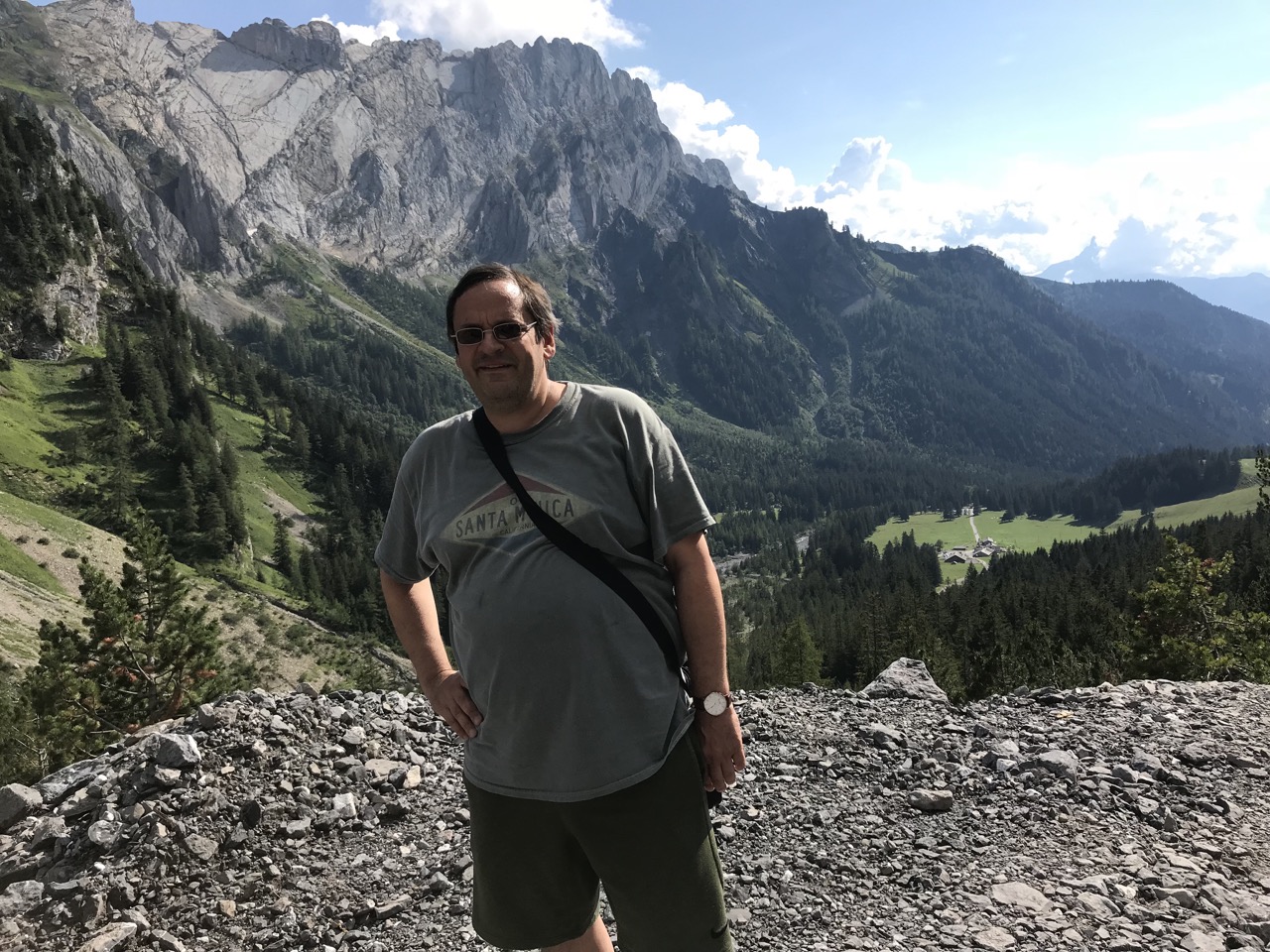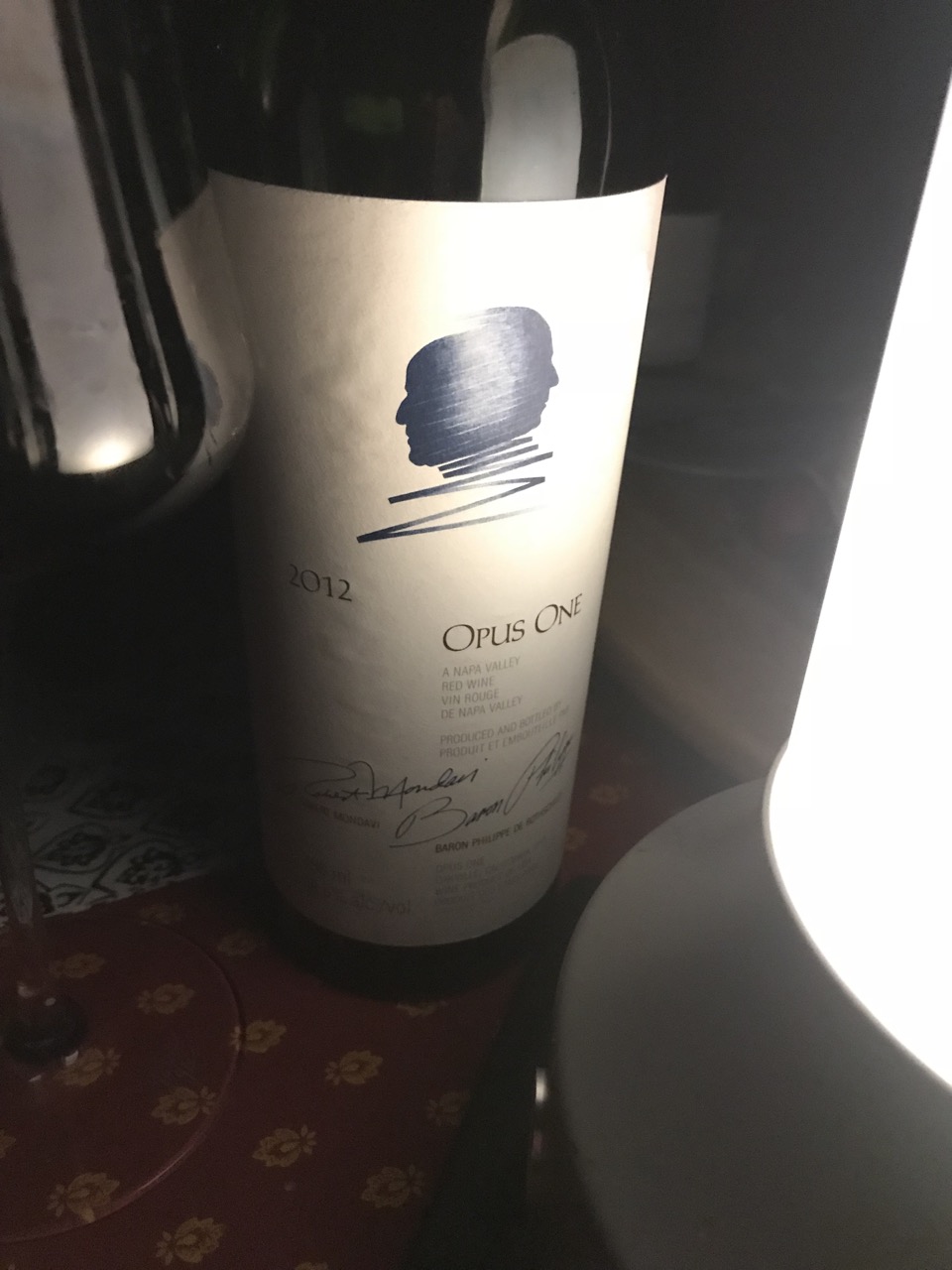Wine serendipity in Switzerland

Great wines, great friends
By Panos Kakaviatos for Wine-Chronicles.com
17 August 2018
While pouring a glass of the Heida Visperterminen, Michel Falck, owner and director of the fine wine shop Au Millésime in Strasbourg, France, says that Swiss wines count among “Les meilleurs du monde“.
Now, Heida Visperterminen may sound like some Swiss medicine, but it actually refers to (arguably) Europe’s highest vineyard: at 1,150 meters high, vineyards in the Valaisian town of Visperterminen include the “Heida Visperterminen”, a white wine, pressed from an old species of grape that bears the same name. The AOC origin is Wallis.
The wine we tried – from the Saint Jodern Kellerei – reached 14% alcohol, given the warm microclimate partially created by a warm southern wind. And it was darn good: giving off notes of aniseed and wet stone. The palate had a fine, yet rich texture. At just over 20 Swiss Francs, I plan to buy a few bottles.

While the grape may be the same as Traminer or Savagnin, the Swiss versions taste “so different from the ones in the Jura,” says Robin Kick MW. “Even the ones made reductively: the Swiss ones have more personality and flesh, though I like the ones in the Jura too, but not quite as much,” she adds.
And you have to admire the history: The Celts cultivated wine in Visperterminen, as shown by archaeological finds. Today about 42 hectares of vines are cultivated in the Heida Village. Three wine producers, including Saint Jodern Kellerei, offer tastings. A vineyard trail informs visitors about the wine, vine species and cultivation. Also very interesting, as Robin Kick MW pointed out in a Facebook post, is that “Heida is the same as Traminer or Savagnin and it is also called Païen, the French name.”
As for Swiss wines counting among “the best in the world”, well, it may not matter so much to people outside the country: it brings to mind the story of whether you know a tree fell in a forest, if nobody was there: only about 2% of Swiss wine is exported. But, yes, darn good, even glorious, wines can be enjoyed in Confoederatio Helvetica. I learned a bit about their quality back in 2015, with this visit. In a subsequent post, I will post detailed notes on three wineries visited this time around in August 2018.
Surrounded by Alpine landscape
So thanks to Michel Falck for introducing me to a lovely white – as well as a couple of nice reds made from the indigenous Humagne Rouge grape – which we enjoyed over lunch at the excellent restaurant Miroir d’Argentine, aptly named after the famous mountain in the Vaud Alps (western part of the Bernese Alps) and rated a “gem of a restaurant” (I absolutely agree) on Trip Advisor.
The food is great and so is the wine list. More important, it is rather affordable by Swiss standards.
The scenery at some 1,470 meters high is perfect: Hikers surround the restaurant, which includes outdoor seating with views of impressive peaks. It is a great starting point for a long walk up a mountain. Sadly there used to be more natural springs, but the peaks have (far) less ice than they used to have, when compared to, say, 30 years ago. And, yes, climate change is real …
Why Miroir d’Argentine? The mountain side is smooth like a “mirror” (see picture above) and well known by climbers, because it has a lot of beautiful climbing routes of all grades, according to Summit Post. In any case, one is the midst of Solalex, a very idyllic area, with cows and bells and plenty of Alpine scenery.
Serendipity and Mystery along the Bieler See (Lake Biel)
But I also got to see lovely lake side views on this August Swiss sojourn. I tasted excellent Pinot Noir from Domaine Saint Sébaste and fine Chardonnay from Johanniterkeller, thanks to a tour organized by friend Yves Beck.
Based in Switzerland, Yves, a celebrated Bordeaux wine critic, exudes positive passion. I met him several years ago during a Bordeaux en primeur tasting at Pétrus, and he is a joy to taste with when we meet annually for barrel tastings. He has an excellent online presence, with copious notes on Bordeaux, among other wine regions.
The “wine-is-a-small-world” notion is proven yet again, as Yves has been a dear friend to Michaela Gabriel, of the 6-hectare Swiss domaine Johanniterkeller, run by her husband Martin Hubacher. I met Michaela a few years back while judging at the Mundus Vini Wine awards in Neustadt in Germany (we meet at the end of August and/or in February for the two judging sessions per year). I only learned later of their friendship.
Before I get to some excellent Swiss wines I tasted on this tour (my next post from Switzerland), I want to focus on a splendid day of great wine and friends + serendipity over lunch, then dinner, at Johanniterkeller.
The domain, in the charming town of Twann, has a perfect lakeside garden, on the bank of Lake Biel, some 25 minutes by car northeast of Neuchâtel. Michaela has a small herb garden, from which we partook to make a fresh summer salad. Yves grilled thick, juicy pork shops, as Michaela put bacon slices over apricots, also grilled. And there was too corn on the cob: just yummy!
This was lunch, accompanied by some fine wines from the Johanniterkeller. Notes on these wines will appear in my subsequent post, but suffice to say that I bought some!
After a visit to another winery – Ursula Angelrath Weinbau – we returned to the lovely lakeside location for dinner of more wine and fine Swiss cheeses that Michaela had purchased from the local cheese shop. Along with the Swiss wines, we had three mysteries.
And here the serendipity bit: In the midst of our cheese chomping, a neighbor of Michaela’s rode by on his boat. He looked a bit like actor Edward Fox in his prime (think of the movie The Day of the Jackal). Michaela invited him over, and he brought two mystery reds, to go with one from Yves.
Mystery Wine 1
I guessed correctly about 14% alcohol. There was a bit of volatile acidity but that blew off over time. Fleshy on the palate and ripe, yet reined in by enough acidity and certainly impressive dry extract and tannic grip. Was this South America? It was not Cabernet Sauvignon dominated to be sure, and that was a correct guess. One did get some oak-derived vanilla and cacao. Now the neighbor misspoke when he said that it was a “2014” because the color and tone suggested an older vintage, which it was. Actually, I was thinking Spain and Tempranillo. In any case, the finish was just a tad short, drying out a bit. But with time in glass it got better – he had just popped and poured it. What was it? Drumroll, please: Vega Sicilia Unico 2004! A lovely wine overall. The blend is 87% Tempranillo and 13% Cabernet Sauvignon and 14% alcohol.
Mystery Wine 2
I was patting myself on the back for making a decent guess for that first mystery. But you know what they say: Pride Cometh Before the Fall. ?Yves brought this wine, whose nose seemed funky barnyard at first, with leather and earth, and almost a bit horsey. But what elegance and finesse on the palate! I found it more focused than the Vega, so much so that it seemed Burgundian by comparison.
So I convinced myself that this was Burgundian (Pinot Noir), and I guessed the 1999 vintage, because of the color and tone. Yves nodded at the vintage and somewhat teasingly asked “Is it Côte de Nuits or Côte de Beaune?” So I guessed Côte de Nuits. This was none other than Château Mouton Rothschild 1999. Before he revealed the Bordeaux, Yves helped with “Pauillac”, and I guessed first Lynch Bages 1999, but it turned out to be the Mouton. Long and dense indeed. Wow. Thank you, Yves!
Mystery Wine 3
Before we enjoyed the third mystery wine, we saw a shooting star: the clear view of the mid August starlit sky was perfect for starlit wines. The initial nose was one of “green coffee bean”, as Michaela said. I got some green too. But there was ripeness here, too. It just seemed a tad disjointed, not as “complete” as the two preceding wines. The neighbor helped us with a (big) hint: “this is a Rothschild wine, but not in Europe” and I initially thought “Almaviva”? Yves said, “no way.” And he was about to explain why it was Opus One, using logic to build to that conclusion, when I interrupted and said “Maybe this is Opus One?” and Yves said “Of course it is!” Cue laughter and more enjoyment: This was truly a lovely evening with great friends and great wines. Over time the Opus One 2012 got better in glass, with richness and excellent length. It has 14.5% alcohol and blends 79% Cabernet Sauvignon and the rest Cabernet Franc (7%), Petit Verdot (6%), Merlot (6%) and Malbec (2%). I may not have given it enough of a fair shake, as we had been tasting and then drinking for much of the evening, so chalk up my less than starry eyed impression to palate fatigue. In the end, I like the Mouton 1999 best, followed by the Vega Sicilia 2004 and then Opus One 2012.
I will get to the detailed notes on Swiss wines in my next post while I am in Switzerland. In the meantime: Uf wiederlüge!
 Wine Chronicles
Wine Chronicles









Share This